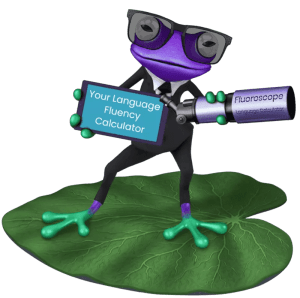Boosting Confidence in Public Speaking for ELLs
Accent and Pronunciation: Boosting Confidence in Public Speaking for ELLs

Introduction
Imagine you’re a master chef. You’re about to prepare a sumptuous meal with all the right ingredients but you’re not quite sure how to chop, sauté, or garnish. Doesn’t sound quite right, does it? Similarly, in the realm of language learning, specifically when it comes to how Accent and Pronunciation Can Boost Confidence in Public Speaking for ELLs, having a rich vocabulary and understanding the grammar rules is only half the battle.
The other half of the linguistic puzzle involves mastering accent and pronunciation. This is your chopping, sautéing, and garnishing in the culinary world of language. Without these crucial components, even the most articulate sentences can lose their flavor.
Yes, public speaking in English might seem like performing a tightrope walk over a linguistic canyon. It’s not just about uttering words. It’s about speaking them in a way that conveys your thoughts clearly and effectively. Your accent and pronunciation serve as the rhythm and pitch to your spoken symphony, adding a layer of complexity to an already intricate task.
Now, if you’ve ever felt your pulse quicken when it’s your turn to speak, or if you’ve avoided situations where you might have to talk in English, know that you’re not alone. Many ELLs grapple with such anxieties, largely due to challenges in mastering accent and pronunciation. The complexities of phonetic symbols, the confusion between similar-sounding words, the struggle to grasp different accents – these hurdles can intimidate even the most dedicated language learners.
However, understanding the nuances of accent and pronunciation, and their impact on your confidence in public speaking, is a game-changer. By tackling these challenges head-on, you can transform from a hesitant speaker to a confident orator. So, let’s slice through these complexities and help you serve your words with confidence and clarity.

Understanding Accent and Pronunciation
Accent vs. Pronunciation: Unveiling the Differences
You’ve probably heard the terms ‘accent’ and ‘pronunciation’ used interchangeably. However, they have distinct definitions in the realm of language learning. Accent refers to the unique way that groups of people sound when they speak the same language. It’s influenced by factors like geography, social class, or the first language of the speaker. On the other hand, pronunciation is about how we articulate individual sounds and words in a language.
Think of accent as the music of speech—it gives your English a distinctive melody and rhythm. Pronunciation, meanwhile, is like the individual notes that make up that melody. You can hit all the right notes (pronunciation) but still play the tune differently (accent).
A Spotlight on Accent: In Practice
Let’s illuminate the concept of accent with some practical examples:
- British and American English: Imagine the word ‘water.’ A British speaker typically pronounces it as “wah-ter,” with a clear ‘t’ sound. But an American might say it like “wadder,” with the ‘t’ morphing into a ‘d’ sound. Both are speaking English, but their accents differ due to geographical influences.
- Indian English: Consider the word ‘schedule.’ In Indian English, shaped by the influence of native Indian languages, it’s often pronounced as “sheh-dule,” contrary to the “skeh-dule” in American English or “shed-yool” in British English.
- Australian English: Take the word ‘dance.’ In Australian English, heavily influenced by British English and unique Australian linguistic factors, it’s often pronounced as “dahns,” while American English typically prefers “dæns.”
Decoding Pronunciation: A Practical Perspective
Now, let’s delve into pronunciation with these examples:
- ‘Ship’ or ‘Sheep’? Non-native speakers often struggle with short ‘i’ and long ‘ee’ sounds in English. The difference between these sounds can change the meaning of the word completely—like ‘ship’ and ‘sheep.’
- The Silent ‘K’: English has numerous silent letters, and their mispronunciation can lead to confusion. Take ‘knee,’ for instance. The ‘k’ is silent, so it’s pronounced “nee” not “kah-nee.”
- Th Sounds: English has two ‘th’ sounds, as in ‘think’ (unvoiced) and ‘this’ (voiced). Some ELLs might pronounce ‘think’ as ‘sink’ or ‘fink,’ and ‘this’ as ‘dis,’ which can muddle the intended message.

The Ripple Effect of Accent and Pronunciation in Public Speaking
The Perception of Credibility and Fluency Shaped by Accent and Pronunciation
Public speaking involves more than just conveying information; it’s about winning the trust of the audience and exuding an aura of competence. Accent and pronunciation play a pivotal role in forming that crucial first impression. A speaker with a clear accent and correct pronunciation is often perceived as more credible, educated, and fluent. It’s an unconscious bias that all of us harbor to some extent. This isn’t to say that having a foreign accent is a bad thing. In fact, it can add a unique flavor to your speech. But being easily understood should be the ultimate goal.
When Mispronunciations Stir the Pot of Confusion
Now, let’s imagine that a word or phrase is mispronounced during a speech. It could lead to momentary confusion, disrupt the flow of the talk, or worse, completely change the intended meaning. We’ve all been in situations where we’ve misheard or misunderstood something, leading to amusing or awkward outcomes. However, in formal or professional settings, such mishaps can be less than ideal.
Real-World Scenarios: Accent and Pronunciation in Action
Each of these examples underscores the importance of correct pronunciation in effectively communicating ideas and avoiding confusion.
- Dessert vs. Desert: As already mentioned, these words are spelled similarly but pronounced differently, and they have completely different meanings. Mispronouncing “desert” when you mean “dessert” can lead to some puzzling conversation at the dinner table.
- Read vs. Read: Here, the pronunciation changes based on tense. Mispronouncing “read” (reed) as “read” (red) or vice versa can create confusion about the timeline of events discussed.
- Lead (Pb) vs. Lead (to guide): In this case, correct pronunciation can be the difference between talking about a heavy metal or the act of leading a group.
- Bow (ribbon) vs. Bow (to bend forward): Pronounced differently, these two words can denote a decorative piece for hair or an act of respect, depending on the context.
- Tear (rip) vs. Tear (from the eye): Mispronouncing one as the other could either dampen or escalate the emotional tone of a conversation.
- Bass (fish) vs. Bass (low, deep sound): Here, mispronunciation might just switch the discussion from fishing to music.
- Wind (air in natural motion) vs. Wind (to turn or twist): Different pronunciation and completely different meanings; this can potentially lead to misunderstanding in discussions involving directions or mechanics.
- Sow (female pig) vs. Sow (plant seeds): The right pronunciation determines whether the conversation is about farming animals or crops.
- Row (line) vs. Row (argument): This is a great example where pronunciation makes the difference between a peaceful arrangement of items and a heated disagreement.
- Content (happy) vs. Content (material): Depending on the pronunciation, this word could either refer to a state of satisfaction or the substance of a document or discussion.

The Battle with Pronunciation Challenges: An ELL’s Perspective
Each language has its unique set of sounds and phonetic patterns. And often, ELLs subconsciously carry the sounds of their native language into their English pronunciation. This can lead to some common pronunciation hurdles. For example, Spanish speakers might struggle with the pronunciation of the English “v” sound, as this sound doesn’t exist in Spanish. On the other hand, Arabic speakers might find the “p” sound challenging, as it is not present in Arabic.
Below are some of the common pronunciation challenges ELLs face and corresponding learning strategies that can help fix them. These often stem from sounds or phonetic patterns that do not exist or significantly differ in learners’ native languages.
1. The “th” sound
Many languages do not have the “th” sound found in English words like “thing” or “though”. This often leads ELLs to substitute it with a “d”, “t”, “f”, or “v” sound, changing the word’s pronunciation.
Strategy & Exercise: Practice makes perfect! Encourage students to stick their tongues out slightly between their teeth and blow air out to create the unvoiced “th” sound (as in “thing”). For the voiced “th” sound (as in “though”), they should vibrate their vocal cords while blowing out the air. Practice with tongue twisters can help, such as: “I thought a thought, but the thought I thought wasn’t the thought I thought I thought.”
2. The “r” sound
In some languages, the “r” is rolled or flipped, which is different from the English “r” sound. This can lead to mispronunciation of words containing the “r” sound.
Strategy & Exercise: Practice the “r” sound by shaping the mouth as if about to say the vowel sound in “red”, then try to say the word without touching the top of your mouth with your tongue. Repeat words with the “r” sound, such as “run,” “rose,” and “rabbit.”
3. Short and long vowels
ELLs often struggle with differentiating short and long vowel sounds, which can lead to misunderstandings— for instance, confusing “ship” with “sheep.”
Strategy & Exercise: Create flashcards with minimal pairs (words that differ by only one sound, like “ship” and “sheep”) and practice distinguishing and pronouncing these sounds. Practice sentences like, “I have a pet sheep,” and “The ship sails on the sea.”
4. The “v” and “w” sounds
Some ELLs, especially those from Asian language backgrounds, may struggle to differentiate between the “v” and “w” sounds, pronouncing “vase” as “wase” or “wave” as “vave.”
Strategy & Exercise: Use a mirror to practice forming the sounds. For “v”, the bottom lip should touch the top teeth, and for “w”, both lips should be rounded. Practice with pairs like “vest/west” and “vane/wane”.
6. Final consonant sounds
In some languages, words do not end in a consonant, which can lead ELLs to drop the final consonant sound in English words, such as saying “hea” instead of “head.”
Strategy & Exercise: Practice saying words with a strong final consonant, then in a sentence. For example, practice saying “head,” then use it in a sentence like “He shook his head.” Encourage exaggerating the final sound until it becomes natural.

Strategies to Improve Accent and Pronunciation
1. Listening Practice
Active listening is the cornerstone of effective communication. It’s not merely hearing the words spoken but understanding the meaning behind them. For English Language Learners, this skill plays a vital role in recognizing the intricate patterns of pronunciation and accents in English. Through active listening, you can tune in to the subtleties that define the English language.
Here are three exercises to enhance your active listening skills:
- Dictation Exercise: Listen to a short audio clip in English, and then try to write down what you’ve heard verbatim. This practice will help you recognize and decipher English sounds, words, and sentences more accurately.
- Summarizing Audio Clips: After listening to a segment from a podcast or a talk show, try to summarize what you understood in your own words. This will help you focus on the overall message and the specifics of pronunciation.
- Spot the Word: Listen to an English speech or dialogue and pick a common word beforehand. Count how many times you hear the word. This practice will enhance your focus and listening accuracy.
Using resources like podcasts, TV shows, and movies is an excellent way to expose yourself to native speech patterns. These mediums demonstrate real, everyday language use, often with a variety of accents and dialects. They provide a context for the language, making it easier to understand how pronunciation and accent vary depending on the situation, the character, and the emotion being conveyed. Such exposure to native speech will accelerate your understanding and mastery of English pronunciation and accent.
2. Mimicking Native Speakers
In the world of language learning, imitation is not just the highest form of flattery, it’s also a very effective strategy. Mimicking native speakers enables you to capture the rhythm, intonation, and pronunciation unique to English. It’s like learning a new song; when you sing along with the original track, you learn the tune, the tempo, and the lyrics much faster.
To help you get started, here are some tips on how to imitate native speech patterns:
- Choose a Model: Find a native English speaker whose speech you find clear and understandable. This could be a character from a movie, a host of a podcast, or a news anchor.
- Break it Down: Listen to short snippets of your chosen model’s speech and try to break it down. Pay attention to the intonation, rhythm, and the way they pronounce certain words.
- Repeat and Imitate: Repeat the same snippets of speech, trying to imitate the intonation, rhythm, and pronunciation as closely as possible. It might feel strange at first, but remember, this is practice!
- Slow it Down: Use tools to slow down the speech if it’s too fast for you to catch. There are many apps and online tools available that allow you to change the speed of audio or video.
- Note the Mouth Movements: Watch videos of native speakers and pay attention to their mouth movements. How they move their lips and tongue can significantly affect the sounds they produce.
As you imitate native speakers, it’s essential to practice speaking out loud. This will allow you to hear and feel the way English is spoken. Recording your practice sessions for self-assessment can also be very beneficial. You can listen to your recordings and compare them with your chosen model’s speech. This can help you identify areas of improvement and track your progress over time. It’s like having your own personalized feedback system. So, don’t shy away from the sound of your own voice. Embrace it and use it as a tool to boost your confidence and proficiency in public speaking.
3. Vocabulary and Phonetics
Mastering English vocabulary and phonetics is akin to a musician knowing their notes and scales; it forms the foundation of the language. Not only does it enable you to communicate your thoughts accurately, but it also helps you understand what others are saying. Additionally, phonetics – the study of speech sounds – can guide you in producing sounds that are non-existent in your native language.
Here are some exercises to practice common pronunciation challenges:
- Minimal Pairs: Practice words that only have one sound difference, like ‘ship’ and ‘sheep.’ This can help you distinguish between similar-sounding words.
- Tongue Twisters: Practice English tongue twisters that focus on challenging sounds. For example, “She sells seashells by the seashore” can help you practice the ‘sh’ and ‘s’ sounds.
- Phoneme Identification: Listen to words and identify the vowel sounds. You could start with simple words like ‘cat,’ ‘dog,’ ‘bin,’ etc.
- Consonant Clusters: Practice words with multiple consonants together, like ‘twelfth,’ ‘texts,’ and ‘sixths.’
- Stress Patterns: Practice the stress patterns in multi-syllable words. For example, the word ‘progress’ is pronounced differently when used as a noun (PRO-gress) and as a verb (pro-GRESS).
Resources like pronunciation dictionaries and online phonetic guides can be invaluable. Websites like Forvo and Sounds of Speech provide phonetic transcriptions and audio of native speakers.
4. Speech Recognition Technology and Apps
In today’s digital age, we can leverage technology to enhance language learning. Speech recognition tools and apps like Lillypad.ai are powerful resources that can support your accent and pronunciation practice. Here are some of the top benefits:
- Instant Feedback: These tools can provide immediate feedback on your pronunciation, allowing you to correct errors on the spot.
- Personalized Learning: They often come with customized learning paths that adapt to your progress and areas of difficulty.
- Flexibility: You can practice anytime, anywhere, at your own pace.
To get the most out of these tools, here are some tips:
- Consistency is Key: Make a habit of using the app daily. Regular practice is crucial for improvement.
- Use the Feedback: Review the feedback provided and focus on areas of difficulty.
- Slow Down: Don’t rush. Speak slowly and clearly for better accuracy.
- Experiment with Phrases: Practicing single words is good, but try using phrases and sentences for a more real-world experience.
- Don’t Depend Solely on the App: While these tools are great, supplement your learning with other methods like listening practice, imitating native speakers, and pronunciation classes.
5. Conversation Practice with Native Speakers
Engaging in conversations with native English speakers offers numerous benefits:
- Real-Time Feedback: You can get immediate correction and advice on your pronunciation.
- Cultural Learning: It’s a chance to learn about different cultures and idiomatic expressions.
- Confidence Building: The more you converse, the more confident you become in your speaking abilities.
- Contextual Understanding: It helps in understanding the context in which certain words or phrases are used.
- Language Immersion: It gives you a taste of language immersion, proven to be one of the most effective ways to learn a language.
Finding language exchange partners or conversation groups can be as easy as joining online communities like Tandem, HelloTalk, or Meetup. Many of these platforms offer options to connect with people who are looking to improve their language skills.
Here are some tips to overcome shyness or nervousness when practicing:
- Start Small: Begin with one-on-one conversations before moving on to group discussions.
- Preparation is Key: Prepare some topics beforehand so you won’t run out of things to say.
- It’s Okay to Make Mistakes: Remember, it’s a learning process. Making mistakes is part of it and it’s how we learn.
6. Pronunciation Classes and Workshops
Taking pronunciation classes or attending workshops can provide structured learning and professional guidance. They offer:
- Expert Guidance: You’ll be under the guidance of trained instructors who can provide valuable insights and corrections.
- Structured Learning: These classes usually follow a systematic approach, making learning more organized.
- Interactive Sessions: Most classes provide an interactive environment which can be beneficial for learning.
Options include:
- Online Classes: Websites offer online pronunciation courses. You can take these at your own pace and convenience.
- In-Person Classes: Check out local language schools or community colleges for in-person courses.
- Workshops: Look for workshops conducted by language institutes. These are often intensive and focused.
Success stories of ELLs who have improved their pronunciation are plentiful:
- Ana Segovia, originally from Brazil, struggled with the pronunciation of English vowel sounds. After attending an online pronunciation course, she saw a significant improvement and gained the confidence to give a presentation in English at her workplace.
- Chen Wu from China had difficulty with certain English consonant sounds. He took a series of pronunciation workshops and is now able to communicate more clearly and confidently.
- Maria Reyes from Spain used to avoid speaking English due to a lack of confidence in her pronunciation. After taking in-person pronunciation classes, she not only improved her pronunciation but also got rid of her fear of speaking English in public.

Cultural Awareness and Pronunciation
Just as culture influences our values, beliefs, and behavior, it also plays a crucial role in shaping the way we use language. This extends not only to vocabulary and grammar but also to pronunciation. By fostering cultural awareness, we can gain a deeper understanding of the subtleties of pronunciation and consequently enhance our communication skills.
Understanding cultural nuances can significantly impact pronunciation. For instance, English as spoken in America is vastly different from English as spoken in the UK, Australia, or India. These differences are often reflective of cultural contexts and can manifest in the form of distinct accents, vocabulary, and even stress patterns in speech.
Let’s consider the American ‘r’ sound. It’s often pronounced more strongly in American English than in British English, especially at the end of words. So, while a British speaker might pronounce ‘car’ almost like ‘cah,’ an American would likely emphasize the ‘r’ sound. Awareness of this cultural nuance can help you adjust your pronunciation based on the variant of English you’re aiming to master.
Here’s another example: in many parts of the US, the ‘t’ sound in the middle of words like ‘water’ and ‘butter’ tends to sound more like a ‘d’. This phenomenon, known as “flapping,” is less common in British English. Recognizing these cultural differences in pronunciation can enable more effective communication and help avoid misunderstandings.
Similarly, when ELLs learn English, they may carry over pronunciation features from their native language, which can lead to an accent. This “foreign accent” is a natural part of the language-learning process and provides a glimpse into the speaker’s cultural background.
One real-life scenario involves an American businessperson working with an Indian colleague. They may initially find the Indian English accent challenging due to its unique pronunciation features influenced by local languages and cultural factors. By developing cultural awareness, the American businessperson can better understand these pronunciation patterns, leading to more effective communication.

Error Correction and Feedback
When it comes to refining accent and pronunciation, constructive criticism serves as the compass that points us in the right direction. Receiving feedback, especially from proficient speakers, can shine a light on areas that require attention and provide us with a roadmap for improvement.
Incorporating feedback into our learning journey is instrumental. It allows us to correct any mispronunciations, refine our accents, and ultimately enhance our language skills. Here are some strategies for seeking this much-needed feedback:
- Ask Directly: Don’t hesitate to ask your language teachers, native speakers, or language exchange partners for feedback on your pronunciation. Express your desire to improve and show openness to their suggestions.
- Language Exchange Platforms: Websites and apps that facilitate language exchange can be a treasure trove of feedback. These platforms allow you to connect with native speakers who can provide insights into your pronunciation and accent.
- Recording and Sharing: Record your speech and share it with proficient English speakers for review. They can listen to your recordings, identify areas of improvement, and provide specific feedback.
- Join English Language Clubs or Toastmasters: These clubs not only offer a platform for practicing public speaking but also provide a supportive environment where members give each other feedback.
- Use Online Language Learning Forums: Websites like Reddit, Quora, or language-specific forums often have threads where learners can post questions about pronunciation and receive feedback from a global community of language learners and native speakers.
Effectively using feedback involves a combination of understanding, reflection, and action. Here are some guidelines on how to do so:
- Comprehend the Feedback: When you receive feedback, make sure you understand what it means. If anything is unclear, ask for clarification.
- Reflect on the Feedback: Reflect on how the feedback aligns with your own perception of your pronunciation. Use it to identify patterns in your pronunciation errors.
- Develop an Action Plan: Use the feedback to formulate a plan for improving your pronunciation. This could involve focusing on specific sounds, intonation patterns, or other aspects of pronunciation.
- Implement the Changes: Practice the suggested changes regularly. Remember, pronunciation improvement requires consistency.
- Monitor Progress: Keep track of your progress. Continue seeking feedback to ensure that your pronunciation is improving.

Resources for Accent Reduction
In the quest to master accent and pronunciation, having the right tools in your toolkit is essential. Numerous resources exist that can aid in this endeavor, from online courses and books to pronunciation guides, each with its unique approach to accent reduction. Here’s an overview of some of these valuable resources, outlining their features and benefits, and specific recommendations to guide your journey.
| Type of Resource | Features | Recommended Titles |
|---|---|---|
| Online Courses | These offer structured and guided lessons on accent and pronunciation. They often provide interactive exercises, video tutorials, and personalized feedback. | “Mastering the American Accent” on Udemy, “American English Pronunciation” on Coursera |
| Books | They provide detailed insights and exercises on accent reduction. These can be beneficial for self-study as they allow you to learn at your own pace. | “American Accent Training” by Ann Cook, “English Pronunciation Made Simple” by Paulette Dale |
| Pronunciation Guides | These guides offer focused assistance on specific sounds or phonetic patterns. They typically provide diagrams, example words, and pronunciation tips. | The Oxford English Dictionary’s online pronunciation guide, “The American English Pronunciation Guide” on YouTube |
| Language Learning Apps | These apps offer portable and interactive learning. They provide features like speech recognition, audio examples, and quizzes. | Lillypad.ai |
| Pronunciation Dictionaries | These are invaluable for checking the pronunciation of any word. They often provide audio examples in different accents. | Cambridge Online Dictionary, Macmillan Dictionary, The Free Dictionary |

Overcoming Challenges and Building Confidence
Improving accent and pronunciation isn’t always a smooth road. There will be bumps and hurdles along the way, moments of frustration, and even times when you feel like you’re not making progress. Yet, it’s important to remember that these challenges are a normal part of the learning process. Like any skill, mastering pronunciation and accent takes time, patience, and most importantly, perseverance.
Maintaining motivation can be challenging, especially during periods where progress seems to plateau. One useful strategy is to set small, achievable goals that you can celebrate along the way. Maybe it’s mastering the pronunciation of a particularly tricky word, or successfully mimicking a native speaker’s speech pattern. These mini victories can fuel your motivation and keep you moving forward.
Next, remember to be kind to yourself. Perfection is not the goal, progress is. Practice positive self-talk. Instead of focusing on the mistakes you made during a conversation, concentrate on the words you pronounced correctly or the sentences where your accent sounded just like a native speaker’s.
You can also use visualization techniques to boost your confidence in public speaking. Close your eyes and imagine yourself delivering a speech flawlessly, feeling confident and at ease. Visualization can help reduce anxiety and foster a more positive mindset towards public speaking.
Another strategy is to join public speaking groups or clubs where you can practice speaking in a supportive and non-judgmental environment. This will provide you with an opportunity to practice your skills, receive constructive feedback, and learn from other public speakers.
Lastly, don’t forget to celebrate your progress. Every time you notice an improvement, no matter how small, take a moment to acknowledge it. This will boost your confidence and make the journey more enjoyable. After all, learning should be a rewarding and fulfilling process.

Conclusion
Throughout this comprehensive guide, we have explored the multifaceted nature of accent and pronunciation for English Language Learners (ELLs) in public speaking. Emphasizing the correct sound and rhythm of words, honing an understanding of cultural nuances, and proactively seeking feedback are some of the cornerstones for refining pronunciation and accent.
Putting into practice the strategies and exercises provided, like active listening, mimicking native speakers, and leveraging speech recognition tools, will undoubtedly lead to noticeable improvement. Technology resources like Lillypad.ai have a pivotal role to play, offering immediate feedback and detailed analysis to help rectify issues and smoothen rough edges.
From building a robust vocabulary to practicing phonetics and engaging in conversation with native speakers, these elements constitute a powerful toolkit for ELLs. With time and dedication, the complexities of pronunciation and accent become less daunting and more of an engaging challenge to overcome.
Pronunciation classes and workshops provide the much-needed platform for ELLs to test their skills, learn from experts, and become part of a community striving towards the same goal. ELLs shouldn’t overlook the potential of these platforms, as they offer structured learning, real-time feedback, and an immersive learning experience.
Refining accent and pronunciation is an investment. It’s an investment in one’s confidence, overall English language proficiency, and ability to effectively communicate thoughts and ideas. The outcome is not just about sounding more like a native speaker, but also about feeling more self-assured when speaking in English. After all, communication is more than just the exchange of words; it’s about making oneself understood and connecting with others. And isn’t that the essence of language?
Frequently asked Questions
Learn from History – Follow the Science – Listen to the Experts
For learners of all ages striving to improve their English, LillyPad combines the most scientifically studied and recommended path to achieving English fluency and proficiency with today’s most brilliant technologies!
What’s the one thing that makes LillyPad so special? Lilly! Lilly’s a personal English tutor, and has people talking all over the world! Lilly makes improving your English easy. With Lilly, you can read in four different ways, and you can read just about anything you love. And learning with Lilly, well that’s what you call liberating!
Additionally, the platform incorporates goal-setting capabilities, essential tracking & reporting, gamification, anywhere-anytime convenience, and significant cost savings compared to traditional tutoring methodologies.
At LillyPad, everything we do is focused on delivering a personalized journey that is meaningful and life-changing for our members. LillyPad isn’t just the next chapter in English learning…
…it’s a whole new story!
Do you want to improve your English? Visit www.lillypad.ai.
William Landry
William is a professional English and ESL teacher with over 15 years of experience. He has taught students of all ages, from children to business executives, and has worked with ESL learners from all over the globe. With a degree in English Education, William has developed curriculum for learners of all levels and interests. He is passionate about helping people learn English effectively and shares his knowledge with the LillyPad community. When he’s not teaching or writing, William enjoys spending time with his wife and two young children.










